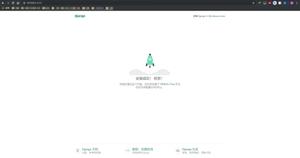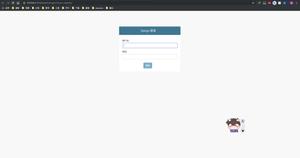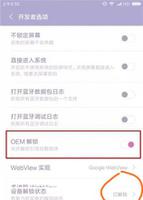Django之MTV实战(2)

目录
1. 回顾知识
- 1.1 新增工程
- 1.2 创建新的APP
- 1.3 注册APP
- 1.4 编写URL和VIEW
- 1.5 验证结果如下:
2. 基本概念
- 2.1 专业术语
2.2 MTV之视图
- 2.2.1 request对象
- 2.2.2 Respone对象
- 2.2.3 GET请求
- 2.2.4 POST请求
- 2.2.5 QueryDict介绍
3. MTV之模板
3.1 模板继承
- 3.1.1 常规手段
- 3.1.2 模板继承
4. Template模板过滤器
- 4.1 Django自带常用过滤器
- 4.2 自定义模板标签和过滤器
5. 模型Model基础
5.1 模型概念
- 5.1.1 常用字段类型
- 5.1.2 常用字段参数
6. 建模及同步
- 6.1 设计一个简单的模型
- 6.2 将模型同步到数据库
7. ORM实现简单的增删改查
- 7.1 ORM概念
7.2 增 | 删 | 改 | 查
- 7.2.1 增加数据
- 7.2.2 删除删除
- 7.2.3 修改数据
- 7.2.4 查看数据
8. 打通MTV
- 8.1 创建模型
- 8.2 创建视图view
- 8.3 创建模板
- 8.4 创建路由视图URL
- 8.5 效果图如下:
Hello, 各位,我回来了,大家别以为我消失了,我还是在的...
最近忙于家里重要事情,不能定期及时更新,请包含...
忙里挑一,我还是在后台默默的码了几篇文章,前提要保证下质量,才能发出来,哈哈!不然...嘿嘿
大家搬好小板凳了,前方的真的高能,文章篇幅有点多,一步一步来...
跟着我走,简单学起来...
1. 回顾知识
上一篇文章已经教会了大家怎么安装Django和简单的配置,相信大家应该早就学会了,那么我们在回忆一下吧,懂的同学可跳过这章节。
1.1 新增工程
django-admin startproject <自定义工程名称>
(py369) [python@localhost Python]$ django-admin startproject devops 1.2 创建新的APP
python manage.py startapp <自定义APP名称>
(py369) [python@localhost devops]$ python manage.py startapp hello1.3 注册APP
在devops->settings.y里面t添加:
INSTALLED_APPS = [ "django.contrib.admin",
"django.contrib.auth",
"django.contrib.contenttypes",
"django.contrib.sessions",
"django.contrib.messages",
"django.contrib.staticfiles",
# 第一种方式
"hello.apps.HelloConfig",
# 第二种方式,直接写hello也行
"hello",
]
1.4 编写URL和VIEW
在devops下的主路由urls.py:
from django.contrib import adminfrom django.urls import path,include
from views import index
urlpatterns = [
path("admin/", admin.site.urls),
path("", index.index),
# 引导到hello下的路由URL(也叫子路由)
path("hello/", include("hello.urls"))
]
在hello下的子路由urls.py:
from django.urls import pathfrom hello import view
app_name = "hello"
urlpatterns = [
# 普通url参数
path("", view.index, name="index"),
hello下的view.py代码:
from django.http import HttpResponsedef index(request):
return HttpResponse("hello django")
1.5 验证结果如下:
2. 基本概念
2.1 专业术语
MTV简写:
M:model,这个是对应数据库的,简单理解就是对应数据库的表。
T:template,这个对应的是HTML模板,前端渲染用的。
V:view,这个对应的是后台python执行脚本了。
通俗的一句话:用户发送http请求,匹配url后执行view脚本返回模板template,用户看到了网页的展示效果(渲染)。
2.2 MTV之视图
2.2.1 request对象
2.2.2 Respone对象
下面详细介绍下...
2.2.3 GET请求
GET请求,不带参数
网页输入这样的格式,是
不带参数:https://192.168.8.130:8888/hello备注:如上面演示的就是不带参数。
GET请求,?+参数
比较常用的方式
?+参数在浏览器输入如下地址:
http://192.168.8.130:8888/hello/?year=2020&month=09&day=02说明: 参数:
yearmonthday网址匹配到路由
hello/url.py的配置规则from django.urls import pathfrom hello import view
app_name = "hello"
urlpatterns = [
# 普通参数
path("", view.index, name="index"),
]
后台视图
hello/view.py代码配置如下:from django.http import HttpResponsedef index(request):
print(request.GET)
return HttpResponse("year is {}, month is {}, day is {}.".format(year, month, day))
后台打印输出的结果如下:
备注: 是一个QueryDict对象。<QueryDict: {"year": ["2020"], "month": ["09"], "day": ["02"]}>从上面已经接收到用户的信息了,就可以获取相应的参数了,hello/view后台脚本更新如下:
from django.http import HttpResponsedef index(request):
#第一个参数是获取QueryDict的year
#第二参数是默认值,表示拿不到数据,用缺省值
year = request.GET.get("year", "2030")
month = request.GET.get("month", "Sep")
day = request.GET.get("day", "8")
return HttpResponse("year is {}, month is {}, day is {}.".format(year, month, day))
网页请求带参数返回的结果如下:
网页请求不带参数返回的结果如下:
GET请求,位置参数
不推荐使用,位置要一一对应入座网址匹配到路由
hello/url.py配置规则from django.urls import re_pathfrom hello import view
app_name = "hello"
urlpatterns = [
# 位置参数
# [0-9]表示数字0-9,{4}表示取4位数字
re_path("([0-9]{4})/([0-9]{2})/([0-9]{2})/", view.index, name="index"),
]
后台视图
hello/view.py脚本配置如下:def index(request, year, month, day):return HttpResponse("year is {}, month is {}, day is {}.".format(year, month, day))
网页输入如下地址,请求返回的结果如下:
GET请求,关键字参数
说明:
强烈推荐,优雅的方式.在浏览器输入如下地址:
http://192.168.8.130:8888/2020/09/02路由视图
hello/url.py配置规则from django.urls import re_pathfrom hello import view
app_name = "hello"
urlpatterns = [
# 关键字参数,(?<参数名>参数类型)
re_path("(?P<year>[0-9]{4})/(?P<month>[0-9]{2})/(?P<day>[0-9]{2})", view.index, name="index"),
]
后台视图
hello/view.py脚本配置如下:from django.http import HttpResponsedef index(request, **kwargs):
# 输出结果:{"year": "2020", "month": "09", "day": "02"}
print(kwargs)
year = kwargs.get("year")
month = kwargs.get("month")
day = kwargs.get("day")
return HttpResponse("year is {}, month is {}, day is {}.".format(year, month, day))
还可以换成另外一种写法,更加灵活,但是用的也不是很多:
from django.http import HttpResponse# 不用考虑到函数参数的位置
def index(request, day, month, year):
return HttpResponse("year is {}, month is {}, day is {}.".format(year, month, day))
2.2.4 POST请求
在devops/setting.py里把csrf关闭,不然会运行报错:
MIDDLEWARE = [ "django.middleware.security.SecurityMiddleware",
"django.contrib.sessions.middleware.SessionMiddleware",
"django.middleware.common.CommonMiddleware",
# 默认开启防止中间人CSRF攻击,前期先注释掉
# "django.middleware.csrf.CsrfViewMiddleware",
"django.contrib.auth.middleware.AuthenticationMiddleware",
"django.contrib.messages.middleware.MessageMiddleware",
"django.middleware.clickjacking.XFrameOptionsMiddleware",
]
网址匹配到路由hello/urls.py配置规则
from django.urls import pathfrom hello import view
app_name = "hello"
urlpatterns = [
path("", view.index, name="index"),
]
后台视图hello/view.py脚本配置如下:
from django.http import HttpResponse, QueryDictdef index(request):
if request.method == "POST":
# POST方法
print(request.method)
# body是字节编码,b"year=2020&month=09&day=13"
print(request.body)
# 转换为字典{"year": "2020", "month": "09", "day": "13"}
print(QueryDict(request.body).dict())
# <QueryDict: {"year": ["2020"], "month": ["09"], "day": ["13"]}>
print(request.POST)
data = request.POST
year = data.get("year", "2030")
month = data.get("month", "9")
day = data.get("day", "8")
return HttpResponse("year is {}, month is {}, day is {}.".format(year, month, day))
模拟触发POST流量:
[root@localhost ~]# curl -X POST http://192.168.8.130:8888/hello/ -d "year=2020&month=09&day=13"year is 2030, month is 9, day is 13.
看看我们后台接收哪些信息:
2.2.5 QueryDict介绍
在httprequest对象中,GET和POST属性是django.http.QueryDict的实例,它是一个自定义的类似字典的类,用来处理同一个键带多个值。无论使用GET,POST方式,他们最终都是通过QueryDict方法对传入的参数进行处理。
3. MTV之模板
3.1 模板继承
3.1.1 常规手段
创建模板
templates目录及子目录hello:mkdir -p devops/templates/hello备注:每一个APP对应一个目录。
路由视图
hello/urls.py配置规则from django.urls import pathfrom hello import view
app_name = "hello"
urlpatterns = [
path("list/", view.list, name="list"),
]
后台视图
hello/view.py配置from django.shortcuts import renderdef list(request):
users = [
{"username":"test01", "age":18, "hobby":"python"},
{"username":"test02", "age":18, "hobby":"java"},
{"username":"test01", "age":18, "hobby":"C"},
]
return render(request, "hello/list.html", {"users":users})
说明:本次练习,还没涉及到数据库,所以先本地创建数据。
新建模板
templates/hello/list.html配置<!DOCTYPE html><html lang="en">
<head>
<meta charset="UTF-8">
<title>点滴技术</title>
</head>
<body>
<p style="background-color: #77ee77">用户列表</p>
<table border="1">
<thead style="background-color: #00aced">
<tr>
<td>username</td>
<td>age</td>
<td>hobby</td>
</tr>
</thead>
<tbody>
{% for user in users %}
<tr>
<td> {{ user.username }} </td>
<td> {{ user.age }} </td>
<td> {{ user.hobby }} </td>
</tr>
{% endfor %}
</tbody>
</table>
<p style="background-color: yellow"> 版权所有©点滴技术 </p>
</body>
</html>
网页输入地址后,效果图:
3.1.2 模板继承
定义母板
在
devops/templates目录下新增一个base.html母板。<!doctype html><html lang="en">
<head>
<!-- 每个html的标签变量,都可以自定义-->
<title>
{% block title %}NetDevOps{% endblock title %}
</title>
</head>
<body>
<!-- body变量,每个页面都可以自定义内容-->
{% block body %}这是body的内容{% endblock body %}
<!-- 底部,每个html页面固定样式 -->
<p style="background-color: yellow"> 版权所有©点滴技术 </p>
</body>
</html>
子页面继承
<!--继承母版-->{% extends "base.html" %}
<!--重写title的内容-->
{% block title %} 用户的列表 {% endblock %}
<!--重写body的内容-->
{% block body %}
<table border="1">
<thead style="background-color: #00aced" >
<tr>
<td>username</td>
<td>age</td>
<td>hobby</td>
</tr>
</thead>
<tbody>
{% for user in users %}
<tr>
<td> {{ user.username }} </td>
<td> {{ user.age }} </td>
<td> {{ user.hobby }} </td>
</tr>
{% endfor %}
</tbody>
</table>
{% endblock%}
备注:公共部分代码就不用写出来了,减少了代码冗余。
视图
hello/view.py配置from django.shortcuts import renderdef userlist(request):
users = [
{"username":"test01", "age":18, "hobby":"python"},
{"username":"test02", "age":18, "hobby":"java"},
{"username":"test03", "age":18, "hobby":"C"},
]
return render(request, "hello/userlist.html", {"users":users})
效果图:
4. Template模板过滤器
4.1 Django自带常用过滤器
传入参数的长度
{% if messages|length >= 3 %}The Messages is too long.
{% else %}
The messages is too short.
{% endif %}
default:缺省值
{{ messages|default:"nothing" }}备注:如果传入的值为false,则使用缺省值。
first/last
{{ messages|first }}{{ messages|last }}
备注:显示列表第一个或最后一个元素。
join
说明:将列表转为字符串。
{{ value|join:"-" }}length
说明:判断长度,返回布尔值
{{ messages|length}}{{ messages|length_is:"4"}}
static
说明:加载本地图片、css、js样式等资源,通常使用CDN方式。
# 方法1:{% load static %}
<img src="{% static "images/favicon.png" %}" alt="Hi!" />
# 方法2:
{% load static %}
{% static "images/favicon.png" as myphoto %}
<img src="{{ myphoto }}"></img>
date
说明:时间格式化,返回年-月-日 时-分-秒
{{ messages|date:"Y/m/d" }}{{ messages|date:"H:i:s" }}safe
说明:缺省情况下,django会对HTML等标签进行自动转义,如果要关闭自动转义,可通过过滤器"|safe"的方式申明不用转义。
value = "<a href="https://www.python.org"> 百度链接 </a>"{{ value|safe }}
csrf_token
说明:用于跨站请求伪造保护
<form action="" method="post">{% csrf_token %} # 有了这个POST请求才能正常运行
<p> <input type="text" name="user"></p>
<input type="submit">
</form>
slice
说明:切片
{{ messages|slice:":2"}}
4.2 自定义模板标签和过滤器
定义标签
创建目录及文件:
hello/templatetags/mytag.pyfrom django import templateregister = template.Library()
@register.filter
def test(x, y):
return int(x)*2 + int(y)qq
模板视图
<!--继承母版-->{% extends "base.html" %}
{% block title %}模板标签{% endblock %}
<!--重写body的内容-->
{% block body %}
<!--自定义模板标签-->
{% load mytag %}
<p> {{ "2"|test:"1" }}</p>
{% endblock%}
5. 模型Model基础
5.1 模型概念
简单理解:模型对应数据库中的表,模型中的一个类对应数据库一张表;
5.1.1 常用字段类型
字符串:
CharFieLdfrom django.db import modelsclass User():
username = models.CharField(max_length=20)
整数:
IntegerFieldint_field = models.IntegerField()浮点数:
FloatFieldfloat_field = models.FloatField()自增字段:
AutoFieldid_field = models.AutoField(primary_key=True)文本框:
TextFieldtext_field = models.TextField()邮箱:
EmailField说明:用于检查邮箱的合法性。
mail_field = models.EmailField()日期:
DateField说明:
auto_now是被保存时,将时间设置为当前时间,通常表示last-modified,auto_now_add是首次被创建时,设置为当前时间,通常表示创建时间。date = models.DateField()文件上传:
Filefield说明:
upload_to必选参数,指文件的上传存放路径。upload_file = models.FileField(upload_to="/usr/tmp/test")
5.1.2 常用字段参数
- null
如果
null=True将再数据库存放一个空值NULL,缺省为Flase。该字段是可以在数据中存放null值。
- blank
如果
blank=True,则允许该字段为空白,缺省是False,不允许为空。该字段是表单验证是否允许为空或不为空的。
- unique
如果
unique=True,表示该字段在整个表单中是唯一的,不重复的。 - primary_key
如果
primary_key=True, 表示该字段在数据库中是主键。 - default = ""
用于定义缺省值。
- verbose_name
ForeignKey、ManyToManyField、和OneToOneField的备注信息需要用到这个。
6. 建模及同步
6.1 设计一个简单的模型
hellomodels.py:
#!/usr/bin/env python3#-*- coding:UTF-8 -*-
from django.db import models
class Devices(models.Model):
device_name = models.CharField(max_length=32, help_text="设备名称")
ip = models.CharField(max_length=15, help_text="管理IP地址")
vendor = models.CharField(max_length=16, help_text="厂商")
device_type = models.CharField(max_length=6, help_text="设备类型")
model = models.CharField(max_length=32, help_text="设备型号")
sn = models.CharField(max_length=32, help_text="序列号")
os = models.CharField(max_length=16, help_text="操作系统")
version = models.CharField(max_length=32, help_text="版本")
def __str__(self):
return self.device_name
6.2 将模型同步到数据库
生成迁移脚本
(py369) [root@localhost devops]# python manage.py makemigrations helloMigrations for "hello":
hello/migrations/0004_devices.py
- Create model Devices
展示迁移的sql语句
(py369) [root@localhost devops]# python manage.py sqlmigrate hello 0004BEGIN;
--
-- Create model Devices
--
此处省略...
执行数据库命令
(py369) [root@localhost devops]# python manage.py migrate helloOperations to perform:
Apply all migrations: hello
Running migrations:
Applying hello.0004_devices... OK
查看数据库表
常用命令解释
# 生产迁移脚本python manage.py makemigrations <app_name>
# 转换后的sql语句
python manage.py sqlmigrate <app_name> <number>
# 执行数据库命令
python manage.py migrate
# 所有APP及对应生效的migration
python manage.py showmigrations
# 将某个APP的migration重置
python manage.py migrate --fake hello
# 强制执行某个版本的迁移脚本
python manage.py migrate --fake hello
python manage.py migrate --fake hello 0004
7. ORM实现简单的增删改查
7.1 ORM概念
- ORM是对数据抽象建模并提供访问接口的编程方式
- 模型中的一个类(class)表示一个表(table)
- 每一个属性对应数据表中的一个字段
- 调用数据表,就是实例化类的对象
7.2 增 | 删 | 改 | 查
7.2.1 增加数据
(py369) [root@localhost devops]# python manage.py shellIn [1]: from hello.models import Devices
# 实例化对象
In [4]: D = Devices.objects.all()
In [5]: D
# 暂时还没有数据,为空
Out[5]: <QuerySet []>
In [7]: data = {"device_name":"test-sw-01", "ip":"192.168.1.1", "vendor":"cisco","device_type":"switch","model":"c3850","sn":"001","os":"ios","version":"15.0"}
# 第一种创建方式(最常用)
In [8]: D.create(**data)
Out[8]: <Devices: test-sw-01>
# 第二种创建方式(防止重复,速度相对较慢):
# 返回一个元组(对象,True或False)
In [10]: data2 = {"device_name":"test-sw-02", "ip":"192.168.1.2", "vendor":"cisco","device_type":"switch","model":"c3850","sn":"001","os":"ios","version":"15.0"}
In [14]: D.get_or_create(**data2)
Out[14]: (<Devices: test-sw-02>, True)
In [16]: D
Out[16]: <QuerySet [<Devices: test-sw-01>, <Devices: test-sw-02>]>
7.2.2 删除删除
数据库表中的数据(偷偷增加了一台设备):
In [1]: from hello.models import Devices# 删除一条记录
# 第一种方法:get
In [4]: D = Devices.objects.get(device_name = "test-sw-02")
In [5]: D.delete()
Out[5]: (1, {"hello.Devices": 1})
# 第二种方法:filter
In [2]: Devices.objects.filter(device_name="test-sw-03").delete()
Out[2]: (1, {"hello.Devices": 1})
# 先还原数据,再删除所有的记录
In [5]: Devices.objects.all().delete()
Out[5]: (3, {"hello.Devices": 3})
7.2.3 修改数据
# 第一种方法:In [2]: D = Devices.objects.get(device_name="test-sw-03")
In [3]: D.device_name = "test-sw-13"
In [4]: D.save()
In [5]: Devices.objects.all()
Out[5]: <QuerySet [<Devices: test-sw-01>, <Devices: test-sw-02>, <Devices: test-sw-13>]>
# 第二种方法:
# 指定字段更新,偷偷去看下后台的ID是多少
In [6]: Devices.objects.filter(id=11)
Out[6]: <QuerySet [<Devices: test-sw-13>]>
In [7]: Devices.objects.filter(id=11).update(device_name="test-sw-03")
Out[7]: 1
In [8]: Devices.objects.get(device_name="test-sw-03")
Out[8]: <Devices: test-sw-03>
# 多个字段更新
In [26]: data = {"vendor":"huawei","device_type":"switch","model":"S9303","sn":"001","os":"VRP"}
In [27]: Devices.objects.filter(id=11).update(**data)
Out[27]: 1
最终效果如下(通过数据库查询):
7.2.4 查看数据
查询多条数据
列表嵌套一个字典(QuerySet对象)
# 查询所有In [30]: D = Devices.objects.all()
In [31]: D
Out[31]: <QuerySet [<Devices: test-sw-01>, <Devices: test-sw-02>, <Devices: test-sw-03>]>
# 每个对象及对象的属性
In [32]: D[0]
Out[32]: <Devices: test-sw-01>
In [33]: D[0].device_name
Out[33]: "test-sw-01"
# 切片,不支持负索引
In [34]: D[:2]
Out[34]: <QuerySet [<Devices: test-sw-01>, <Devices: test-sw-02>]>
# 遍历
In [36]: for d in D:
...: print(d.device_name)
...:
test-sw-01
test-sw-02
test-sw-03
# 返回指定的字段(values_list 和 values)
In [37]: D.values_list("device_name","ip")
Out[37]: <QuerySet [("test-sw-01", "192.168.1.1"), ("test-sw-02", "192.168.1.2"), ("test-sw-03", "192.168.1.3")]>
In [39]: D.values("device_name","vendor")
Out[39]: <QuerySet [{"device_name": "test-sw-01", "vendor": "cisco"}, {"device_name": "test-sw-02", "vendor": "cisco"}, {"device_name": "test-sw-03", "vendor": "huawei"}]>
查询一条数据
# 第一种方法:In [2]: D = Devices.objects.get(device_name="test-sw-01")
In [3]: D
# 返回的是一个对象
Out[3]: <Devices: test-sw-01>
# 取对象的属性值
In [4]: D.device_name
Out[4]: "test-sw-01"
In [5]: D.vendor
Out[5]: "cisco
# 第二种方法:
In [6]: data = {"device_name":"test-sw-01"}
In [7]: D = Devices.objects.get(**data)
In [8]: D.device_name
Out[8]: "test-sw-01"
- 过滤查询
In [9]: Devices.objects.filter(device_name="test-sw-01")Out[9]: <QuerySet [<Devices: test-sw-01>]>
In [11]: Devices.objects.filter(**data)
Out[11]: <QuerySet [<Devices: test-sw-01>]>
- 过滤常用方法:
# 不区分大小写:<属性值>__iexactIn [16]: Devices.objects.filter(device_name__iexact="test-sw-01")
Out[16]: <QuerySet [<Devices: test-sw-01>]>
# 包含匹配:<属性值>__contains
In [17]: Devices.objects.filter(device_name__contains="sw")
Out[17]: <QuerySet [<Devices: test-sw-01>, <Devices: test-sw-02>, <Devices: test-sw-03>]>
# 模糊匹配,不分区大小写:<属性值>__icontains
In [18]: Devices.objects.filter(device_name__icontains="sw")
Out[18]: <QuerySet [<Devices: test-sw-01>, <Devices: test-sw-02>, <Devices: test-sw-03>]>
# 正则模糊匹配:<属性值>__regex
In [20]: Devices.objects.filter(device_name__regex="-03$")
Out[20]: <QuerySet [<Devices: test-sw-03>]>
# 正则模糊匹配,不区分大小写:<属性值>__regex
In [21]: Devices.objects.filter(device_name__iregex="^test")
Out[21]: <QuerySet [<Devices: test-sw-01>, <Devices: test-sw-02>, <Devices: test-sw-03>]>
# 排除过滤:<属性值>__contains
In [22]: Devices.objects.exclude(device_name__contains="test-sw-01")
Out[22]: <QuerySet [<Devices: test-sw-02>, <Devices: test-sw-03>]>
# 包含带有sw的device_name,但排除了vendor是cisco厂商的
In [23]: Devices.objects.filter(device_name__contains="sw").exclude(vendor="cisco")
Out[23]: <QuerySet [<Devices: test-sw-03>]>
# filter其他常用过滤查询方法
__exact:精确匹配
__iexact:精确匹配,忽略大小写
__gt:大于
__gte:大于等于
__lt:小于
__lte:小于等于
__in:在一个list列表范围内
__startswith:以...开头
__startswith:以...开头,忽略大小写
__endswith:以...结尾
__range:在...范围内
__year:日期的年份
__month:日期的月份
__day:日期的日数
__isnull=True/False:字段是否为空
get和filter的区别:# 都可以获取到指定的对象;# get是获取唯一数据的场景,数据不存在会报错;
# filter适用于任何场景,返回是一个QuerySet对象,数据不存在则返回是空的对象。
排序查询
# 正序In [32]: Devices.objects.all().order_by("device_name")
Out[32]: <QuerySet [<Devices: test-sw-01>, <Devices: test-sw-02>, <Devices: test-sw-03>]>
# 倒序,前面加
In [33]: Devices.objects.all().order_by("-device_name")
Out[33]: <QuerySet [<Devices: test-sw-03>, <Devices: test-sw-02>, <Devices: test-sw-01>]>
8. 打通MTV
8.1 创建模型
参见以上的hello/models.py的配置。
8.2 创建视图view
from django.shortcuts import renderfrom hello.models import Devices
def devicelist(request):
# 对象实例化
devices = Devices.objects.all()
# {"devices":devices}表示传参
return render(request, "hello/device.html", {"devices":devices})
8.3 创建模板
<!--继承母版-->{% extends "base.html" %}
<!--重写title的内容-->
{% block title %}设备列表{% endblock %}
<!--重写body的内容-->
{% block body %}
<p style="background-color: #77ee77">设备列表</p>
<!--表格-->
<table border="1">
<!-- 表头-->
<thead style="background-color: #00aced" >
<tr>
<td>设备名称</td>
<td>IP地址</td>
<td>厂商</td>
<td>设备类型</td>
<td>型号</td>
<td>序列号</td>
<td>操作系统</td>
<td>版本号</td>
</tr>
</thead>
<!--表的正文-->
<tbody>
{% for device in devices %}
<tr>
<td> {{ device.device_name }} </td>
<td> {{ device.ip }} </td>
<td> {{ device.vendor }} </td>
<td> {{ device.device_type }} </td>
<td> {{ device.model }} </td>
<td> {{ device.sn }} </td>
<td> {{ device.os }} </td>
<td> {{ device.version }} </td>
</tr>
{% endfor %}
</tbody>
</table>
{% endblock%}
8.4 创建路由视图URL
from django.urls import pathfrom hello import view
app_name = "hello"
urlpatterns = [
path("devicelist", view.devicelist, name="devicelist"),
]
8.5 效果图如下:
大家先不要在意前端效果,后面的项目,再把UI这块优化好,先到这里了,大家学会了吗?
好不容易码完这篇了,大家点个赞吧!
如果喜欢的我的文章,欢迎关注我的公众号:点滴技术,扫码关注,不定期分享
以上是 Django之MTV实战(2) 的全部内容, 来源链接: utcz.com/z/530249.html







